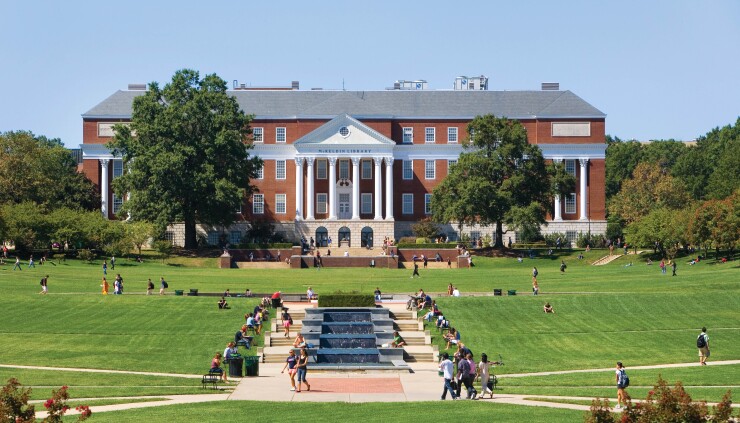A public private partnership to fund upgrades and the greening of the central heating and cooling system at the University of Maryland’s main College Park campus is slated to arrive next week in the primary market.
Conduit issuer Maryland Economic Development Corp. is set to price $345.5 million of green revenue bonds for the NextGen Energy Project.
Sole manager Wells Fargo Securities plans to seek initial indications of interest Monday before final price guidance and institutional launch Tuesday, according to an online investor presentation about the deal.
University of Maryland
Interest will be federally taxable, and the bonds are expected to carry a 10-year optional redemption provision at par. Final maturity is slated for 2057.
Moody’s Ratings assigned its A3 rating to the bonds.
The rating agency cited the district energy project’s essentiality to the university’s flagship College Park campus, “coupled with its high predictability of cash flows derived from well-structured concessionaire charge payments during operations and a standard framework for risk allocation under the concession agreement between the public and private parties.”
The university system itself carries Moody’s Aa1 rating and stable outlook.
The program’s objective is to secure long-term reliable, efficient, sustainable and affordable heating, cooling and electric service at the College Park campus.
The campus is now served by a central energy plant that generates electricity, a steam thermal system that supports heat and hot water distribution, and a chilled water system.
The power turbines and the chillers in particular are aging and increasingly unreliable, and the steam system piping and manholes are also aging, according to the presentation.
The P3 promises to deliver a nearly complete overhaul of the Central Energy Plant, replacement of the three existing chillers and necessary repairs and improvements to the thermal distribution system.
The project promises a 23% reduction in carbon emissions, 50% reduction in water use, and calls for the concessionaire to deliver a study on how to fully decarbonize by 2035.
Equity providers are entities linked to Kiewit, a large-scale construction and engineering provider, and Plenary, a worldwide investor, developer and manager of public infrastructure.
According to Moody’s, the rating also considers the consortium members proven experience to complete significant projects under the P3 model in the U.S. and North America, including direct experience managing similar district energy systems in Maryland.
The bonds carry the green bond designation, supported by an external review from Kestrel.
“NextGen will play a critical role in ensuring that the University of Maryland can depend on a sustainable energy system for decades to come and provide multiple pathways to achieve the university’s goals of carbon neutrality by 2025 and going fossil fuel-free by 2035,” the university says in
“A carbon-neutral campus is a significant step, but now it’s time to set our sights on reducing UMD’s dependency on fossil fuels. We are committed to a fossil fuel-free power plant under the NextGen Energy Program,” University President Darryll J. Pines said in a statement.
Miles & Stockbridge is bond counsel.
